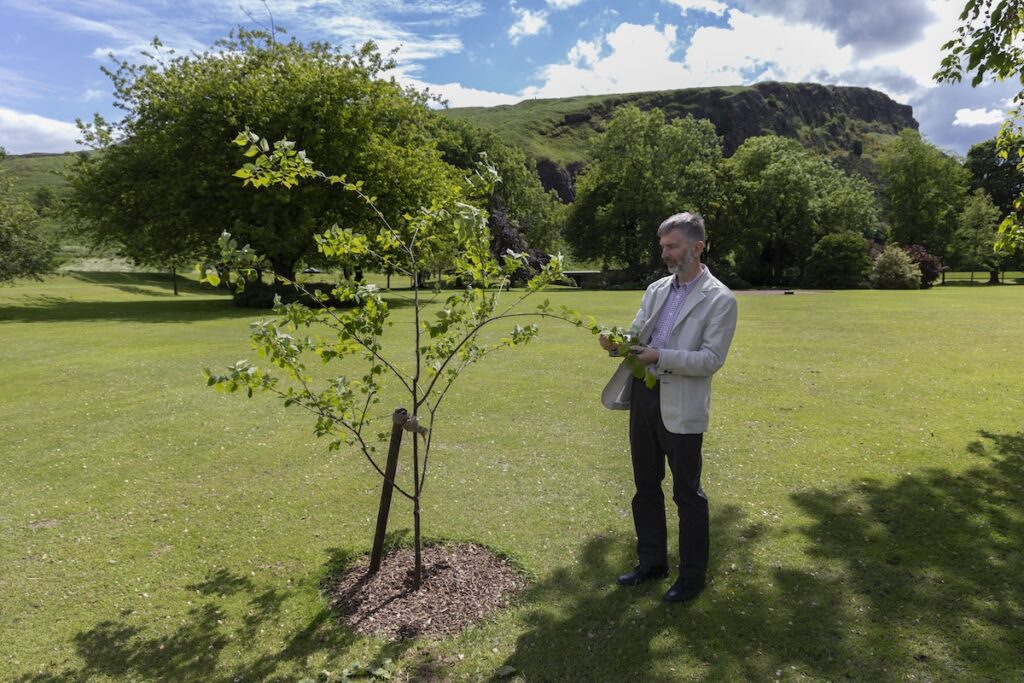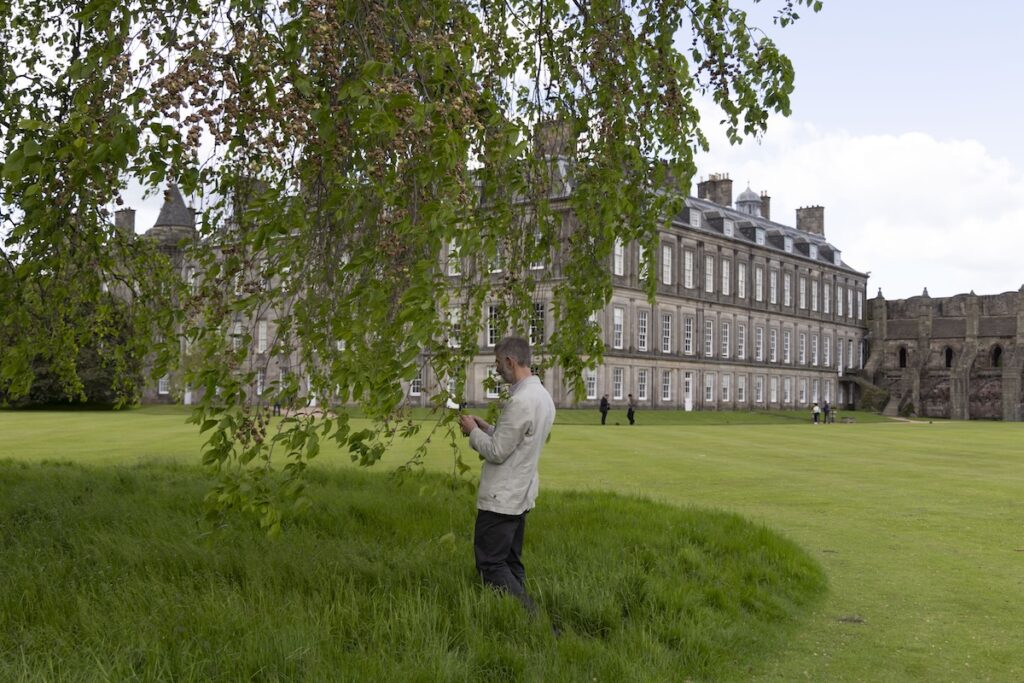“Extinct” elm thriving in Edinburgh
A sapling elm has been planted in the grounds of the Palace of Holyroodhouse in Edinburgh – 29 years after the species was thought to have become extinct in Britain.
Britain’s last known Wentworth elm, a mature specimen growing at the Royal Botanic Gardens Edinburgh (RBGE) was killed by Dutch elm disease in 1996.
Two decades later, during a tree survey in 2016, two mature Wentworth elms were discovered growing in the grounds at the Palace of Holyroodhouse, the King’s official residence in Scotland.
Cuttings from the 30-metre (98ft) trees were successfully propagated and grown on by multiple teams of horticulturists to maximise their chances of survival.
One of the saplings, grown at Historic Environment Scotland’s (HES) gardens nursery, was given by the People of Scotland to the King and Queen in celebration of their Coronation.
It has now been planted at the Palace of Holyroodhouse at the request of The King – who is Patron of RBGE.
The new Wentworth elm at Holyroodhouse has been planted beside one of the impressive trees from which it originated and will ensure that the species does not die out.
It will eventually replace the adjacent mature elm, which is now in a state of managed decline.
Two more young trees were successfully grown at the RBGE Nursery in Edinburgh before being sent to The Savill Garden at Windsor Great Park, before being planted on the Highgrove Estate in Gloucestershire, another royal residence.
Horticulturists at Highgrove Gardens intend to take cuttings from the young Wentworth elms and replant them back in the Windsor Estate, where they would become part of a large collection of ancient and veteran trees.
The Wentworth elm is thought to have been introduced to cultivation in Britain in the late 19th century.
It was thought to have been wiped out in the late 20th century during the devastating Dutch elm disease epidemic that is estimated to have destroyed upto 100 million trees.
The new trees could now contribute to the reintroduction of the species nationwide.
Dr Max Coleman, a tree expert at RBGE, identified the Wentworth elms in the grounds of the Palace of Holyroodhouse in 2016, due to the “weeping” characteristic of their branches and large, glossy leaves.
Dr Coleman said: “Records in our archives show we had three Wentworth elms here in 1902, which we believe were gifted to the Palace of Holyroodhouse.
“We suspect that one of the trees succumbed to Dutch elm disease. However, it was a big surprise to find the two remaining specimens growing in plain sight in the Palace grounds.
“The next obvious step was to find out if horticulturists could propagate from them.”
Dr Coleman added: “It is very likely the only reason these rare elms have survived is because HES and the council have been rigorously surveying and removing diseased elms since the 1980s.
“Without this work many more of the thousands of elms in Edinburgh would have been lost. The success of this programme is being demonstrated in the way two rare trees have been preserved.”
Stuart Lerette, HES’ Head Gardener for the Palace of Holyroodhouse, who planted the sapling in the grounds, said: “It’s been a tremendous honour to be involved in the planting of this special sapling.
“The elm planted at Holyrood was grafted in March 2021 and planted in March 2024. This elm was splice grafted onto an elm seedling collected within the palace gardens.
“The scion material was a young shoot from the mature Wentworth elm situated in the North garden.
“We look forward to seeing this young tree flourish into the future.”
Highgrove Gardens is managed by His Majesty’s charity The King’s Foundation, and is open to the public between April and October every year.
Melissa Simpson, Head of Horticulture for The King’s Foundation, said: “Highgrove Gardens has been a pioneering place for horticulture since His Majesty first established the organic gardens here in 1980.
“It is heartening to see how visitors to the gardens get inspiration from the flora and fauna they see during their tour.
“We are therefore delighted to be part of this exciting Wentworth elm project and hope they will continue to provide inspiration well into the future.”
Simon Milne MBE, Regius Keeper of RBGE, described the successful propagation of the Wentworth elms as a “testament to the skill and dedication” of conservation horticulturists at RBGE, HES and the Palace of Holyroodhouse, whose innovative work provides hope for generations of trees to come.
He said: “There was a lot of excitement surrounding the discovery of the Wentworth elms nine years ago.
“Now, from the only two surviving trees, progeny have been successfully grown and planted in the grounds of our Patron, His Majesty The King.
“Further cuttings will be taken with the aim to increase the number of Wentworth elms around the country.
“This is an encouraging example of effective collaboration between horticulture and science to address the threats to so many native species in the United Kingdom.”





